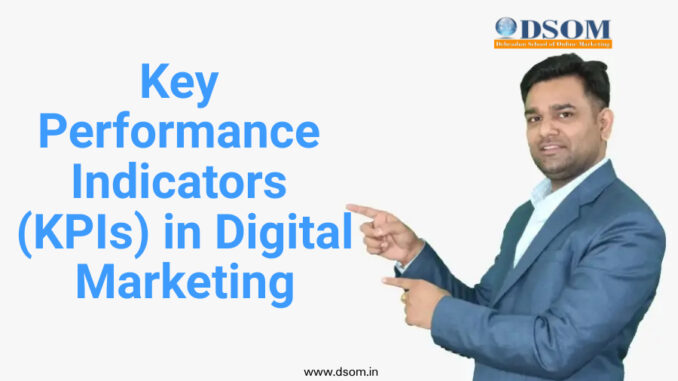
Key Performance Indicators (KPIs) in Digital Marketing
Digital marketing is a rapidly evolving field that demands data-driven decision-making. Key Performance Indicators (KPIs) play a critical role in measuring the effectiveness of digital marketing campaigns. KPIs are quantifiable metrics used to track and evaluate the success of a specific business objective. They provide businesses with measurable goals and targets, allowing them to identify strengths and weaknesses in their digital marketing strategies. In this article, we will discuss the most important KPIs in digital marketing and how to use them to drive business success.
1.Website Traffic:
The first and foremost KPI for any digital marketing campaign is website traffic. This KPI measures the number of visitors to a website over a specific period of time. Increasing website traffic can lead to higher engagement, increased leads, and ultimately more revenue. Google Analytics is a great tool to track website traffic and gain insights into where visitors are coming from and what content they are engaging with.
2.Conversion Rate:
Conversion rate is another crucial KPI in digital marketing. This metric measures the percentage of visitors who take a desired action on a website, such as filling out a contact form, making a purchase, or subscribing to a newsletter. A high conversion rate indicates that a website is effectively engaging and convincing visitors to take the desired action.
3.Cost Per Acquisition (CPA):
Cost Per Acquisition (CPA) measures the cost of acquiring a new customer through digital marketing channels. This KPI is important for determining the overall cost-effectiveness of a digital marketing campaign. By comparing the CPA to the average customer lifetime value (CLV), businesses can determine whether their digital marketing efforts are generating a positive return on investment.
4.Return on Ad Spend (ROAS):
Return on Ad Spend (ROAS) is a KPI that measures the revenue generated for every dollar spent on digital advertising. This metric helps businesses determine the effectiveness of their advertising campaigns and allocate resources accordingly. A high ROAS indicates that a digital advertising campaign is generating significant revenue for the business.
5.Click-Through Rate (CTR):
Click-Through Rate (CTR) measures the number of clicks on a digital advertisement or email campaign relative to the number of impressions (views). This KPI is essential for determining the effectiveness of ad copy and design, as well as the relevance of targeting. A high CTR indicates that an advertisement is resonating with the intended audience and generating engagement.
6.Bounce Rate:
Bounce Rate measures the percentage of visitors who leave a website after viewing only one page. A high bounce rate indicates that a website is not effectively engaging visitors or meeting their needs. By improving the user experience and content on a website, businesses can reduce bounce rates and increase engagement.
7.Social Media Engagement:
Social media engagement measures the level of interaction between a business’s social media content and its audience. This KPI includes metrics such as likes, comments, shares, and followers. By measuring social media engagement, businesses can determine the effectiveness of their social media strategy and adjust accordingly.
In conclusion, KPIs play a critical role in measuring the effectiveness of digital marketing campaigns. By tracking and analyzing these metrics, businesses can gain insights into the strengths and weaknesses of their digital marketing strategies and make data-driven decisions. The KPIs discussed in this article provide a solid foundation for any digital marketing campaign, but it’s essential to tailor them to the specific business goals and objectives. By focusing on the right KPIs and regularly monitoring them, businesses can drive success and achieve their digital marketing goals.

Leave a Reply